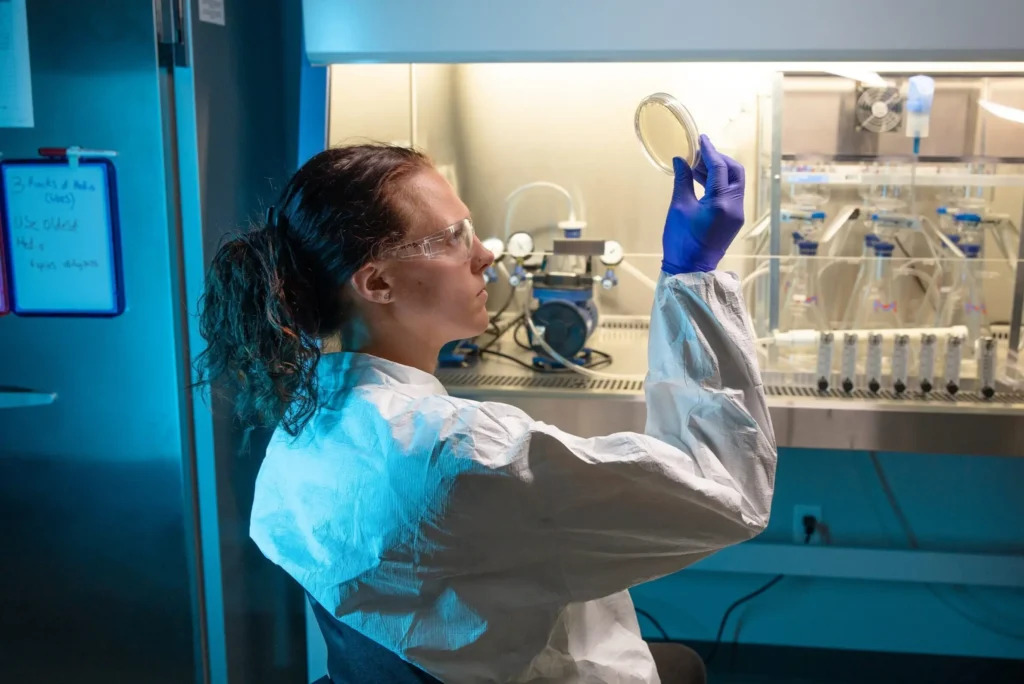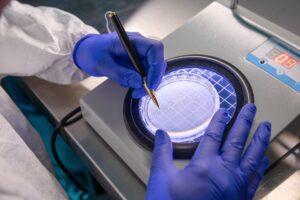

Byline: Maggie Dailey, Sales Engineer, Packaging Compliance Labs (PCL)
Microbial Ranking may not be the most widely discussed testing method in sterile packaging, but it plays a critical role in ensuring barrier performance. Whether you’re working with Tyvek®, medical-grade paper, or new materials from emerging markets, understanding how to approach ASTM F1608 can make all the difference in your product’s success (and your next audit).
Here are the top 3 things to know when planning a Microbial Ranking test:
Direct Plate vs. Dilution Method
The right method depends on the sterile packaging material you’re testing:
- For Tyvek®: Use the Direct Plating Method.
- Tyvek® has a Log Reduction Value (LRV) of 4–5, meaning it blocks 99.99% of microorganisms.
- This high barrier performance, direct plating is effective without overwhelming microbial counts.
- For medical-grade paper or unknown porous materials: Use the Dilution Plating Method.
- This approach ensures the microbial load stays readable and avoids skewed results.
What is Log Reduction Value (LRV)? During the incubation period of the microbial ranking method, the colonies that have developed are counted. The number of colonies is plugged into an equation, which is derived from logarithmic math, and the result provides you with a log reduction number. A LRV with a higher value means it prevents more microorganisms from penetrating the barrier. A lower LRV means it allows more microorganisms to penetrate the barrier.
Choose a Risk-Based Sample Size
While the standard recommends a minimum of 2 samples, most medical device manufacturers (MDMS) have more custom sample sizes based on different validation strategies.
- Some MDMS use 10 samples per interval, aligning their microbial ranking with bioburden testing practices.
- Because microbial ranking is an attribute test, some MDMs opt for 30 samples per interval to achieve statistical benchmarks of 95% confidence and 95% reliability, particularly when regulatory scrutiny is high. This approach keeps the sample size consistent with the sample sizes used for other package integrity tests.
Consult with your regulatory team to decide on a sample size that fits your risk tolerance and product profile.
Know When to Perform Microbial Ranking ASTM F1608 testing is typically performed:
Microbial Ranking is typically performed:
- After stability testing
- Following adhesive or coating changes
- When evaluating new materials from suppliers
- Ahead of FDA audits or other regulatory submissions
By confirming sterile barrier performance, Microbial Ranking testing helps reduce infection risks, ensures patient safety, and demonstrates compliance with global packaging validation standards.
Final Takeaway
ASTM F1608 Microbial Ranking is a powerful tool for validating the sterile barrier integrity of medical device packaging. Choosing the right method, determining a risk-based sample size, and knowing when to test ensures both regulatory confidence and patient safety. At Packaging Compliance Labs, our engineers partner with MDMs to design validation strategies that withstand regulatory scrutiny and keep patient safety front and center. Are you ready to plan your next microbial ranking test? Contact PCL today to speak with a Sales Engineer